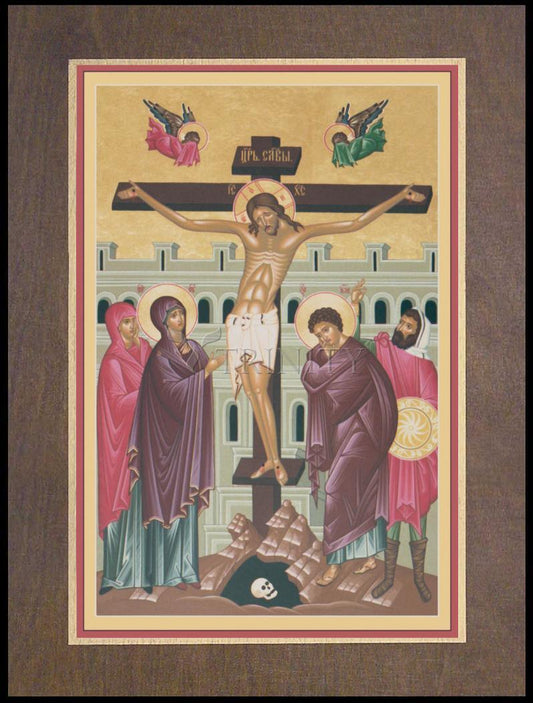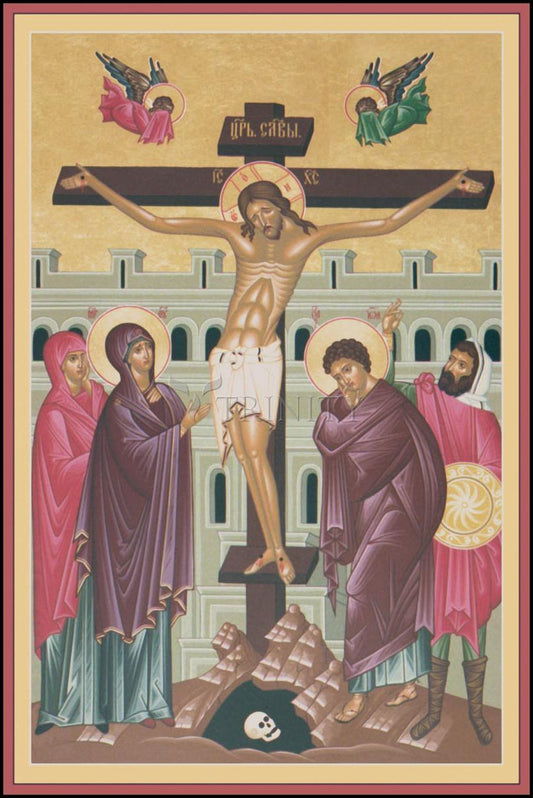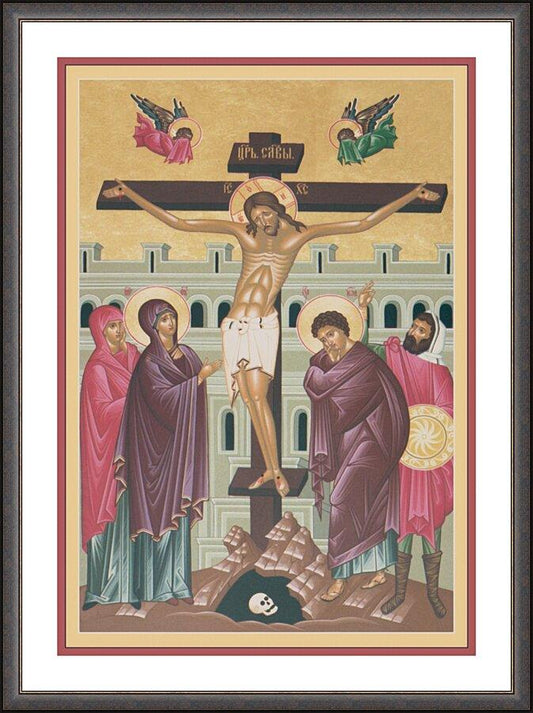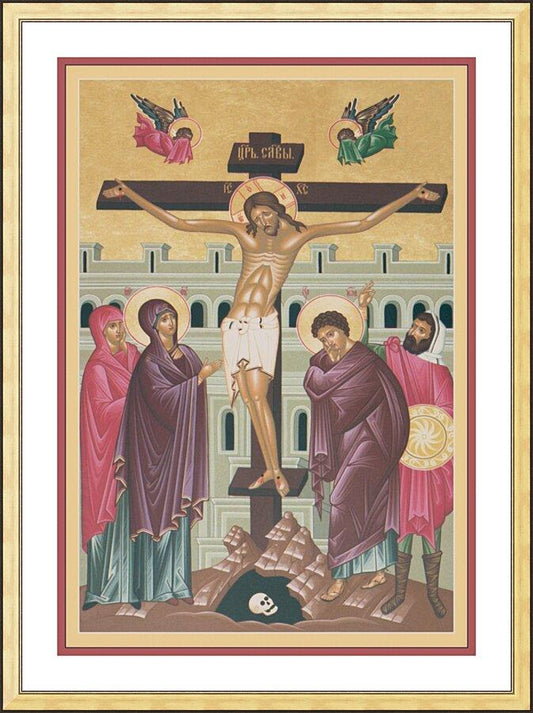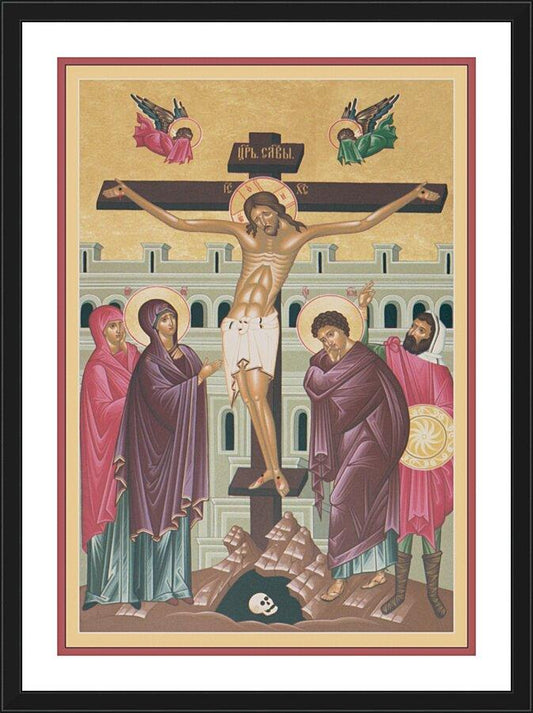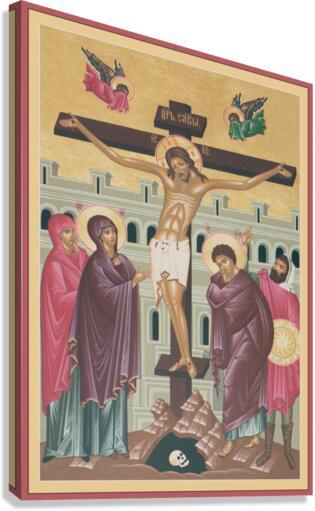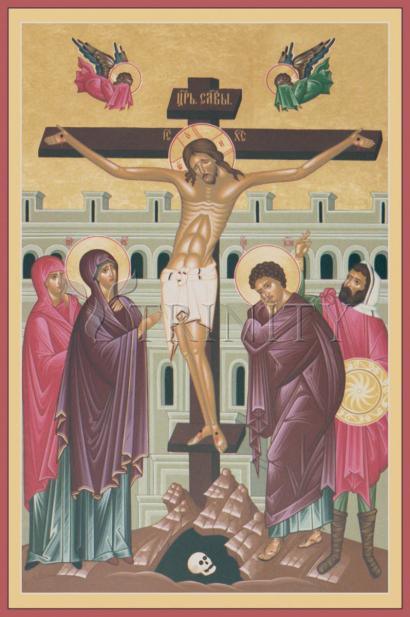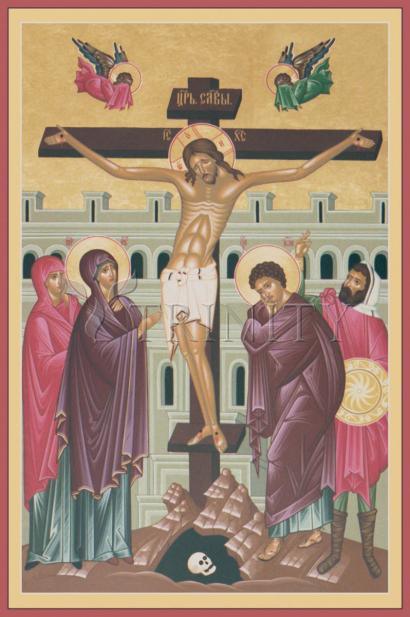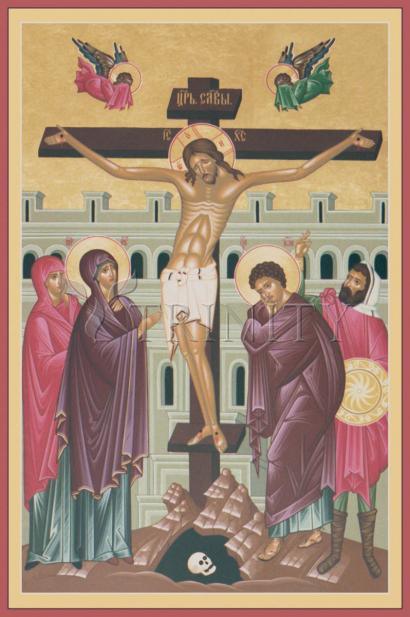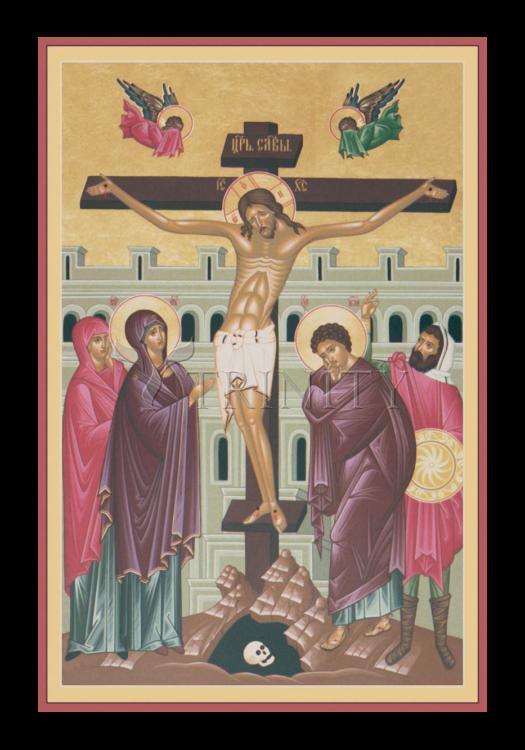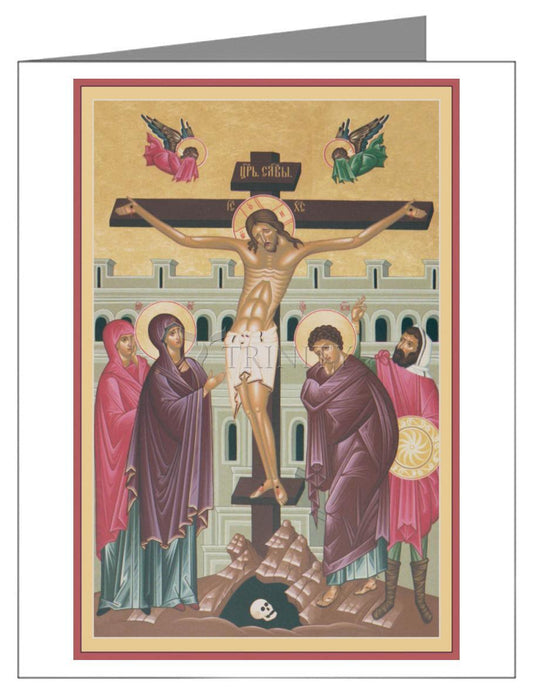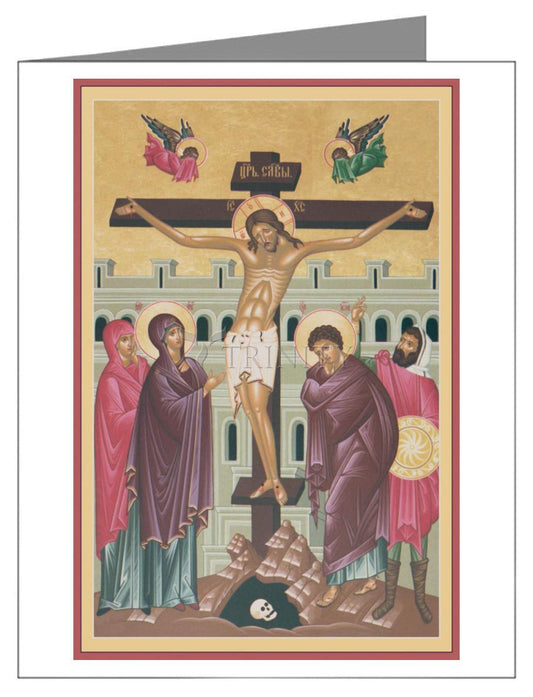Jesus Christ, the central figure of Christianity, died on a Roman cross as recorded in Matthew 27:27-56, Mark 15:21-38, Luke 23:26-49, and John 19:16-37.
The Jewish high priests and elders of the Sanhedrin accused Jesus of blasphemy, arriving at the decision to put him to death. But first they needed Rome to approve of their death sentence, so Jesus was taken to Pontius Pilate, the Roman governor in Judea. Although Pilate found him innocent, unable to find or even contrive a reason to condemn Jesus, he feared the crowds and let them decide Jesus' fate. Stirred by the Jewish chief priests, the crowds declared, "Crucify him!"
As was common, Jesus was publicly scourged, or beaten, with a leather-thonged whip before his crucifixion. Tiny pieces of iron and bone chips were tied to the ends of each leather thong, causing deep cuts and painful bruising. He was mocked, struck in the head with a staff and spit on. A prickly crown of thorns was placed on his head and he was stripped naked. Too weak to carry his cross, Simon of Cyrene was forced to carry it for him.
He was led to Golgotha where he would be crucified. As was the custom, before they nailed him to the cross, a mixture of vinegar, gall, and myrrh was offered. This drink was said to alleviate some of the suffering, but Jesus refused to drink it. Stake-like nails were driven through his wrists and ankles, fastening him to the cross where he was crucified between two convicted criminals.
The inscription above his head tauntingly read, "The King of the Jews." On the cross Jesus hung for his final agonizing breaths, a period that lasted about six hours. During that time, soldiers cast lots for Jesus' clothing, while people passed by shouting insults and scoffing. From the cross, Jesus spoke to his mother Mary and the disciple John. He also cried out to his father, "My God, my God, why have You forsaken Me?"
At that point, darkness covered the land. A little later, as Jesus gave up his spirit, an earthquake shook the ground, ripping the Temple veil in two from top to bottom. Matthew's Gospel records, "The earth shook and the rocks split. The tombs broke open and the bodies of many holy people who had died were raised to life."
It was typical at crucifixions for Roman soldiers to show mercy by breaking the criminal's legs, thus causing death to come more quickly. But this night only the thieves had their legs broken, for when the soldiers came to Jesus, they found him already dead. Instead, they pierced his side. Before sunset, Jesus was taken down by Joseph of Arimathea and laid in a tomb according to Jewish tradition.



